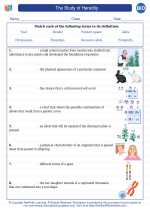Animals
Animals are multicellular, eukaryotic organisms that belong to the kingdom Animalia. They are diverse in form and habitat, and play a critical role in the ecosystem. In this study guide, we will explore the classification, characteristics, and diversity of animals, as well as their role in the environment and their interactions with humans.
Classification of Animals
Animals are classified into different groups based on their characteristics, including their body structure, reproductive methods, and evolutionary history. The main groups of animals are:
- Phylum Porifera (sponges)
- Phylum Cnidaria (jellyfish, corals)
- Phylum Platyhelminthes (flatworms)
- Phylum Annelida (segmented worms)
- Phylum Mollusca (snails, clams, octopuses)
- Phylum Arthropoda (insects, spiders, crustaceans)
- Phylum Chordata (vertebrates and invertebrates with a notochord)
Characteristics of Animals
Animals share several key characteristics:
- They are multicellular, with cells organized into tissues and organs.
- They are heterotrophic, meaning they obtain nutrients by consuming other organisms.
- They have the ability to move, either through locomotion or by using specialized structures.
- They undergo sexual reproduction, although some species can also reproduce asexually.
Diversity of Animals
Animals display immense diversity in terms of size, shape, habitat, behavior, and physiology. From microscopic organisms to massive whales, animals have adapted to thrive in various environments, including terrestrial, aquatic, and aerial habitats.
Role of Animals in the Environment
Animals play crucial roles in the environment, including regulation of populations, pollination of plants, nutrient cycling, and maintenance of ecological balance. They are also integral parts of food webs and provide resources for human use, such as food, clothing, and medicine.
Human Interactions with Animals
Humans have domesticated and utilized animals for various purposes, including agriculture, transportation, companionship, and scientific research. However, human activities also pose threats to animal populations through habitat destruction, pollution, and climate change.
Study Guide
To study animals effectively, consider the following key points:
- Understand the classification of animals and the distinguishing features of each group.
- Learn the major characteristics that define animals as a distinct group of organisms.
- Explore the diverse adaptations seen in different animal species and their significance in survival.
- Examine the ecological roles of animals and the impact of human activities on animal populations and habitats.
- Consider the ethical and conservation considerations related to human interactions with animals.
By grasping these fundamental concepts, you will gain a comprehensive understanding of the fascinating world of animals and their importance in the natural world.
.◂Biology Worksheets and Study Guides High School. The Study of Heredity
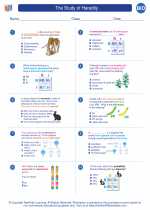
 Worksheet/Answer key
Worksheet/Answer key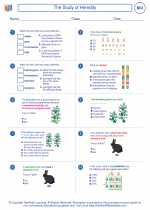
 Vocabulary/Answer key
Vocabulary/Answer key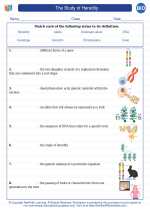
 Vocabulary/Answer key
Vocabulary/Answer key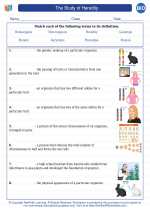
 Vocabulary/Answer key
Vocabulary/Answer key